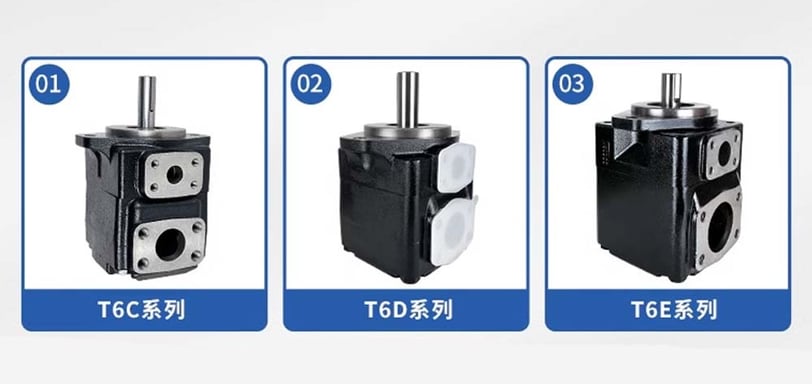Common Denison T6C T6D Punching Machine Rotary Vane Pump Failure and Troubleshooting Methods
1/21/20252 min read


Understanding the Denison T6C T6D Pump System
The Denison T6C and T6D models are well-regarded for their robust performance in industrial applications, primarily utilizing a rotary vane pump system. However, like all mechanical systems, they can encounter failures over time due to various factors such as wear and tear, contamination, and improper maintenance. This blog aims to highlight common failure modes and provide effective troubleshooting methods to address these issues.
Common Failure Modes of Rotary Vane Pumps
Rotary vane pumps in the Denison T6C and T6D models may show different types of failures. One prevalent issue includes poor suction performance, which might result from a worn-out or damaged vanes. Insufficient lubrication or high-temperature conditions can accelerate the wear of vanes. Additionally, contamination of the hydraulic fluid with dirt or moisture can lead to pump failure, causing efficiency losses.
Another common failure mode is excessive noise during operation, which can indicate an imbalance or mechanical failure within the pump assembly. Rattling sounds can also suggest that components such as bearings or rotors may require inspection or replacement. Identifying these warning signs early can prevent significant equipment downtime and costly repairs.
Troubleshooting Techniques for Efficient Repair
When faced with a rotary vane pump failure in the Denison T6C or T6D punching machine, follow a series of troubleshooting techniques. First and foremost, assess the hydraulic fluid. Regularly check for contamination, and ensure that the fluid meets the manufacturer’s specifications. High-quality hydraulic fluid should be maintained to later mitigate issues that arise from pump wear or system failure.
Next, inspect the pump for signs of wear. Visual inspections should involve examining the vanes, housing, and seals for signs of degradation. If worn parts are identified, prompt replacements can restore functionality and efficiency. Additionally, verifying the system pressure and flow rates can help pinpoint performance issues—abnormal readings can guide you to further investigate specific components of the pump.
Another troubleshooting method involves checking for leaks in the system. Leaks can lead not only to reduced performance but also to safety hazards. Regular checks can help detect potential leaks early. For instance, evaluating the pump seals and hose connections can aid in identifying where fluid loss occurs.
Implementing Preventive Maintenance
Once troubleshooting is complete, it is vital to establish a solid preventive maintenance plan. Regular maintenance checks can prolong the lifespan of the Denison T6C and T6D pumps and ensure optimal performance. Scheduled inspections, regular fluid changes, and cleaning components will eliminate contaminants that compromise the pump's integrity.
Furthermore, training personnel on best maintenance practices can enhance your team’s ability to respond to potential issues before they develop into full-scale failures. Knowledge transfer is invaluable in maintaining the operational excellence of facilities relying on rotary vane pump systems.
Conclusion
In conclusion, understanding the common failures related to Denison T6C and T6D rotary vane pumps can significantly reduce downtime and maintenance costs. By employing thorough troubleshooting techniques and establishing a rigorous maintenance routine, you can ensure that your punching machine operates efficiently for years to come.
